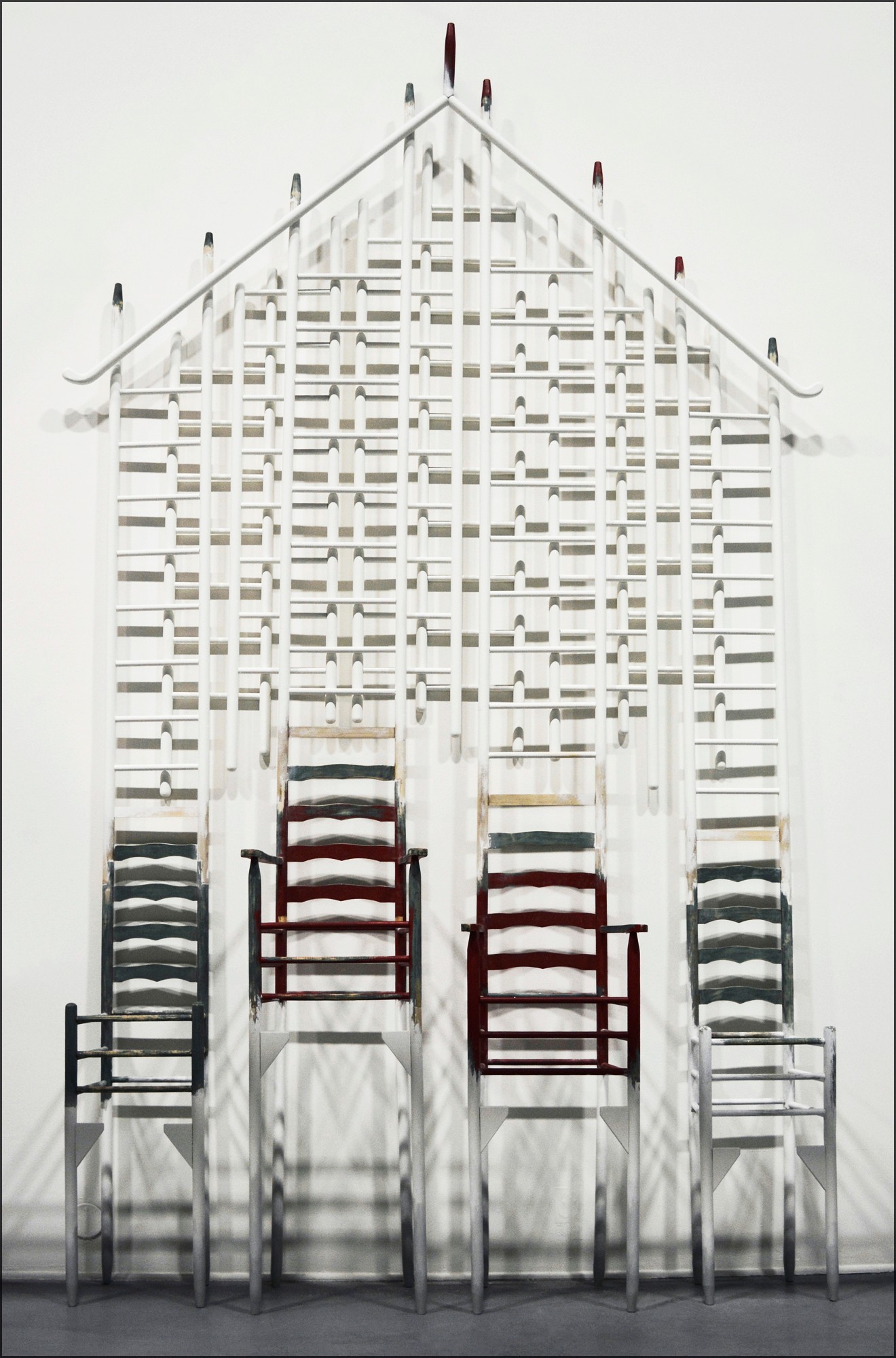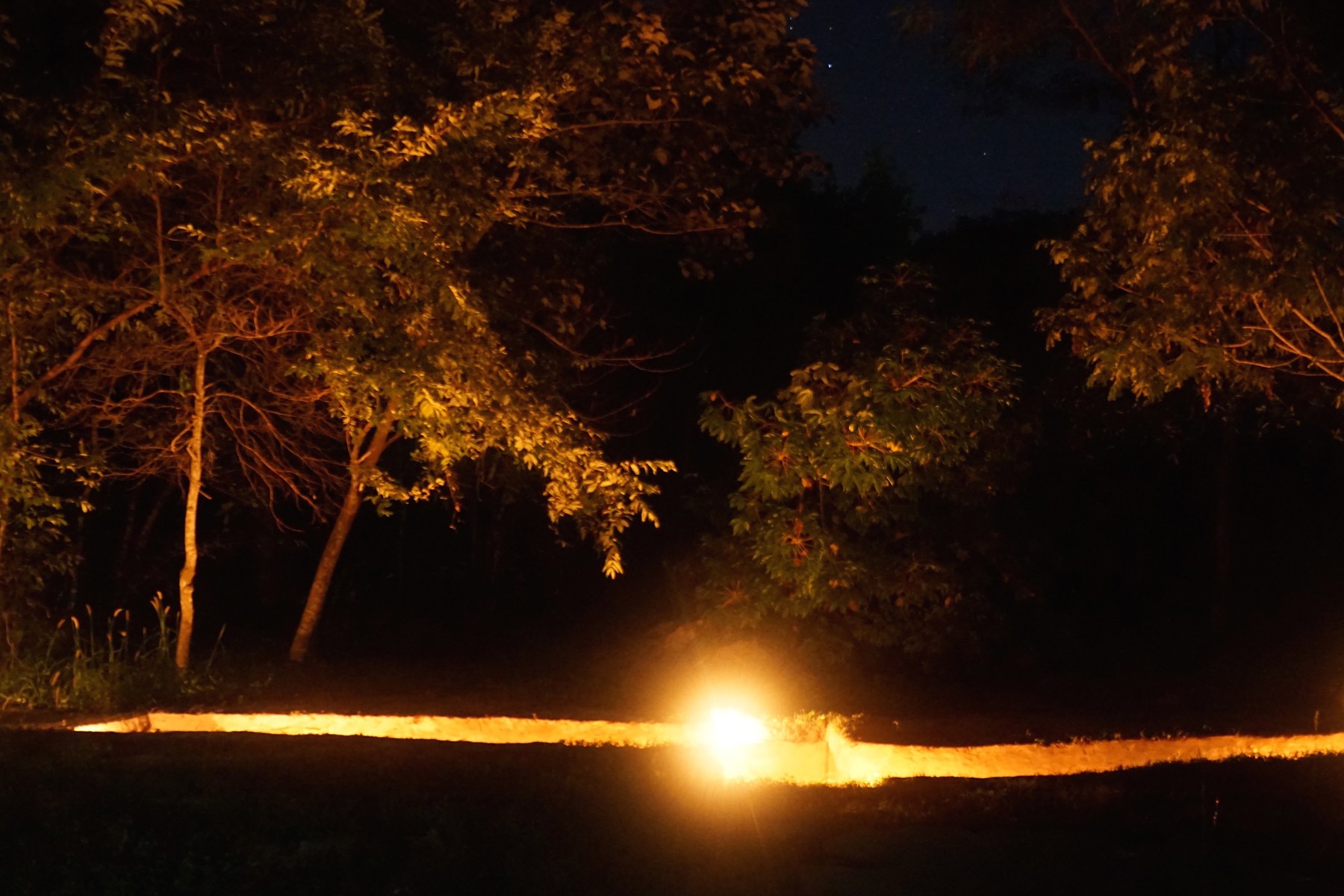We were lucky to catch up with Manon Wada recently and have shared our conversation below.
Manon, thanks for joining us, excited to have you contributing your stories and insights. Can you talk to us about a project that’s meant a lot to you?
The most meaningful, recent project I’ve worked on was with artist Jessica Higgins that culminated in a show called ECHOES curated by Jeffrey Perkins at The Emily Harvey Foundation in New York City last year in November 2023. The exhibition centered around a large video projection, a collaborative installation, individual works, and a site-specific performance.
My late father, Yoshi Wada, was a sound installation artist and passed away in 2021. I had been making a body of work using inherited materials from him and in the process I was connected with both Jessica and Jeffrey. Jessica’s mother, Alison Knowles, and my father were artist friends and both members of the art movement Fluxus. The Emily Harvey Foundation is located in SoHo in a historic Fluxhouse, which is where my family used to live. The project aligned auspiciously with the event taking place on what would have been my father’s 80th birthday on November 11th, and in that same year, Jessica’s mother celebrated her 90th birthday. The constellation of the individuals involved, the site, and the timeframe, made this project resonate in a profound way.
Jessica and I collaborated on a video piece entitled Echo, Song, and Hallucination (2023), which was recorded by Jeffrey Perkins onsite at The Emily Harvey Foundation. The video piece was made up of 3 scenes where we engaged in a double projection process. The scenes of Song and Hallucination included footage of our parents and in the final scene of Echo, we exchanged words from two text-based works in a call and response format. For our Performance with Red Thread and Singing Bowl (2023), Jessica and I wrapped the gallery edge in red thread and in the process, the audience was wrapped inside the perimeter. There was a sound accompaniment composed by my brother, Tashi Wada, and performed by artist Joshua Selman. The electronics were recorded with one of my father’s beloved audio generators and performed on his singing bowl.


Manon, before we move on to more of these sorts of questions, can you take some time to bring our readers up to speed on you and what you do?
I’m an interdisciplinary artist originally from and currently based in New York City on Canarsie Munsee Lenape land. My art practice takes form as sculpture, installation, and video, which frequently intersects with poetry. In tandem, I often work collaboratively and on socially engaged, community based art projects. In my art practice I excavate narratives of collective hungry ghosts, contemporary displacement, and translation of what is found through loss. My artwork tends to land on a timeline that investigates combinations of rupture, repair, and empathy.
In conversation I often describe myself as having been translated into English from my father and mother tongues of Japanese and French, however, art is the gift of language that my parents did pass down to me. I come from a family of artists and composers and was raised with art. Inherited furniture and domestic found objects are a main source of material for my sculptures, which largely began with a series of works using a set of family heirloom chairs. Ever since, chairs have become a recurring element in my work and have entered my visual vocabulary as architecture and caretakers of the body.
My method of working considers the site as a main feature where I respond to natural characteristics, architectural elements, and historical contexts. Concurrently, human connection is an underlying thread where my works are made in response to individuals, collaboratively with other artists, or as collective writing projects where the viewers become active participants. A main point of inspiration behind my work is in experimentation by pushing the boundaries within my own methods of making and engaging, where art is not dead.


We’d love to hear a story of resilience from your journey.
For a number of years I’ve been engaging in a way of working that continually poses and attempts to answer the question: what can be found through loss? I’m sharing a short story about a suitcase that I used for a sculpture, which has had multiple lives now and is embodying its own sense of resilience in content and form.
In the fall of 2019, my father was discarding a number of personal effects, including the suitcase with which he immigrated to the United States from Japan, a letter, a chair, and a floor plan. I made a work entitled digestion (2020) for an exhibition at Harrington Gallery in Pleasanton, California, where I dissected the suitcase into halves and installed a mini projector in one half that projected onto a fabric screen onto the other half of the suitcase. The video projection was a series of vignettes processing the discarded materials in a way that loosely correlated with the stages of digestion. In later years, my father would eat take-out sushi with a fork and I always found this quite humorous. It’s the last recording I have with him.
In 2023, I reconfigured the dissected suitcase into a new work called Meiyo. Typically I don’t reincarnate past sculptures but in the process of remembering, mourning, and honoring, it felt suited. The collection of tools for Meiyo were inherited from my father who worked in carpentry for over 40 years. When he retired from that work, he gave me his tools and the majority of my artwork has been made with them. Wrapping this small selection of tools in fabric was intended to be an act of care and as a gesture towards honoring my father. This work was a contemporary interpretation of traditional Japanese fabrics called furoshiki, used for safekeeping objects during transport, and fukusa, used for wrapping gifts. One half of Meiyo was exhibited at The Emily Harvey Foundation in NYC while the other edition was simultaneously exhibited at Hub Robeson Galleries at Penn State University.
Earlier this year, I was invited to resurrect that work digestion (2020) for an exhibition at Edge on the Square in San Francisco, California. This new version of digestion (2024) is a two-channel sculpture set inside a different suitcase inherited from my father. I recorded a new series of vignettes mirroring the first videos, which processed a new set of materials including layers of kimono, a letter with photos he sent me, and his signature stamp. In one of the final vignettes, I eat take-out sushi with a fork alone and my reflection is mirrored in the frame. This sculpture has taken on a life of its own in a poetic cycle and I will be installing another version of digestion this coming January at Grace Exhibition Space in NYC. These two newer versions of digestion will be up simultaneously on both coasts.


What do you find most rewarding about being a creative?
The most rewarding aspect of being an artist for me is making conceptually and materially compelling artwork that resonates with others at an intrinsic level. I’ve found that the artworks that behave in this way strike a chord through shared experiences in content, immersive installations, and participatory projects that engage the audience in a direct way. I’m recalling a couple projects where I received direct writing from participants who were meaningfully touched with their engagement.
The Pet Memorial (2022) is a collaborative and co-authored project that commemorates past pets on the chairs of Elsewhere Museum. During an artist residency at Elsewhere Museum in Greensboro, North Carolina, I collaborated with artist Avery Rose, who was the house manager/curator there at the time. We collected over 65 responses from community members of Elsewhere who wrote a description and a memory of a passed pet. We then inscribed the name of the pet on a chair in the museum. The pet memorial is both virtual, providing remote access online and kinetic, with inscribed chairs moving throughout the museum.
An installation called Wandering Home (2017-19) that I collaborated on with artists Reiko Fujii and Maggie Yee for a traveling exhibition of A Place of Her Own curated by Cynthia Tom collected over 360 handwritten notes from participants to their self-identified hungry ghosts. Hungry ghosts are found in many Asian cultures and are typically characterized as lost or unhappy spirits that haunt the living. For this contemporary interpretation of hungry ghosts, we created a space for the public to pay homage to personal hungry ghosts that they wished to release. Due to the personal nature of the writing, the contents have been kept private. Collaborators of the project acknowledged the notes and then released them by burning them at Muir Beach in California.
Contact Info:
- Website: https://www.mbwada.com/
- Instagram: @manonwada


Image Credits
Image 1: Jeffrey Perkins
Image 2: Scott Walden
Image 6: Manon Wada, Kelsey Sharpe
Image 7: Nordlys Photography
Image 8: Reiko Fujii


